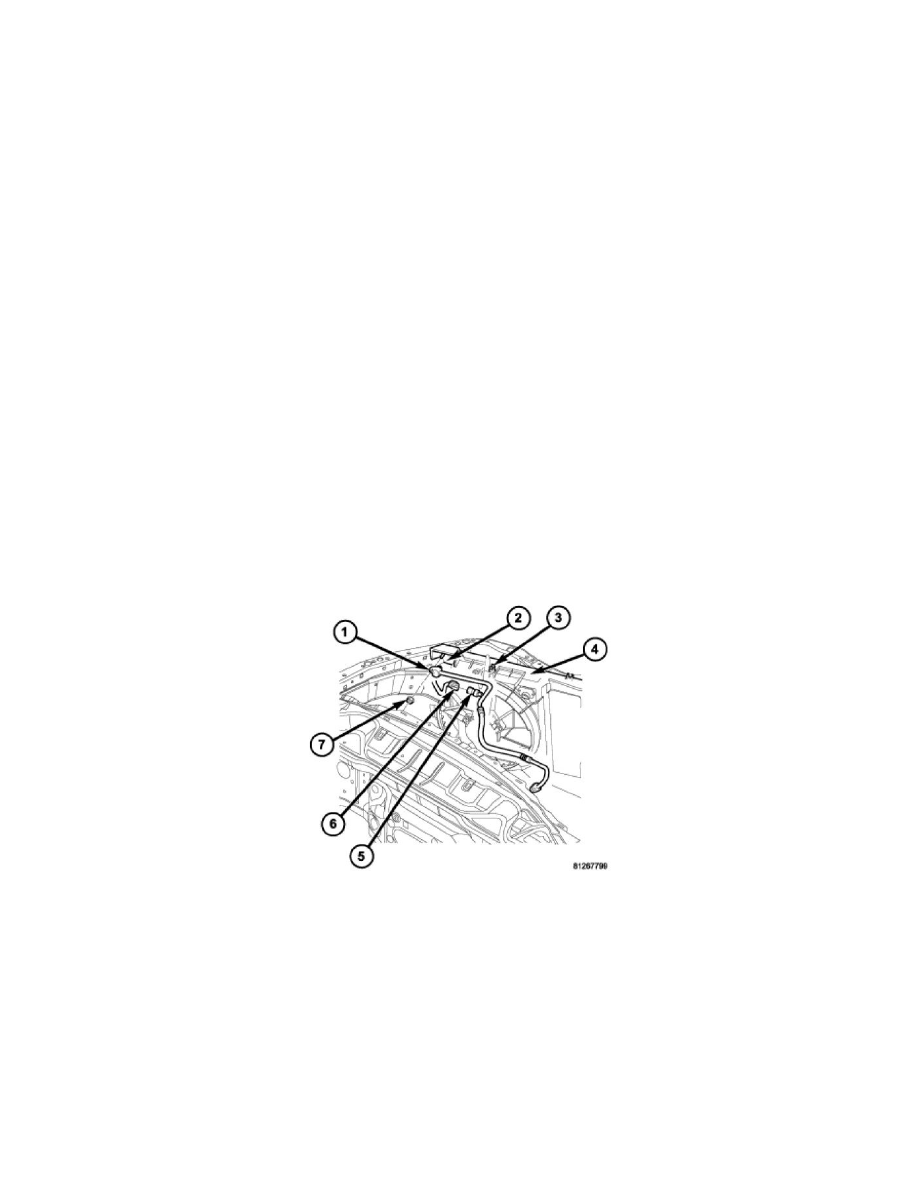Aspen 2WD V8-4.7L (2007)

Hose/Line HVAC: Description and Operation
Plumbing - Front
Description
DESCRIPTION
The A/C refrigerant lines and hoses are used to carry the refrigerant between the various A/C system components. The refrigerant lines and hoses for the
R-134a A/C system consist of a barrier-hose design with a nylon tube sandwiched between rubber layers. The nylon tube helps to contain the R-134a
refrigerant, which has a small molecular structure. The ends of the refrigerant lines are made from lightweight aluminum and braze-less fittings.
Any kinks or sharp bends in the refrigerant lines and hoses will reduce the capacity of the entire A/C system and can reduce the flow of refrigerant within
the system.
Operation
OPERATION
High pressures are produced in the refrigerant system when the A/C compressor is operating. Extreme care must be exercised to make sure that each of
the refrigerant system connections is pressure-tight and leak free. It is a good practice to inspect all flexible hose refrigerant lines at least once a year to
make sure they are in good condition and properly routed.
Depending on vehicle, model and market application, refrigerant lines are connected to each other or other A/C system components with block-type or
quick-connect type fittings. To ensure the integrity of the refrigerant system, flat gaskets and O-rings are used to seal the refrigerant system connections.
The refrigerant lines and hoses cannot be repaired and must be replaced if leaking or damaged.
Line-A/C Discharge
DESCRIPTION
The A/C discharge line (1) is the refrigerant line that carries refrigerant from the A/C compressor to the A/C condenser (2) and is secured to the
condenser fan shroud (4) by a plastic retainer (3). The A/C discharge line has an integral fitting for the A/C pressure transducer (5).
NOTE: Replacement of the refrigerant line O-ring seals and gaskets is required anytime a refrigerant line is opened. Failure to replace the rubber O-ring
seals and metal gaskets could result in a refrigerant system leak.
The A/C discharge line has no serviceable parts except for the rubber O-ring seals. The O-ring seals used on the connections are made from a special
type of rubber not affected by R-134a refrigerant. The O-ring seals must be replaced whenever the A/C discharge line is disconnected.
The A/C discharge line cannot be repaired and must be replaced if found to be leaking or damaged.
Line-A/C Liquid
DESCRIPTION
